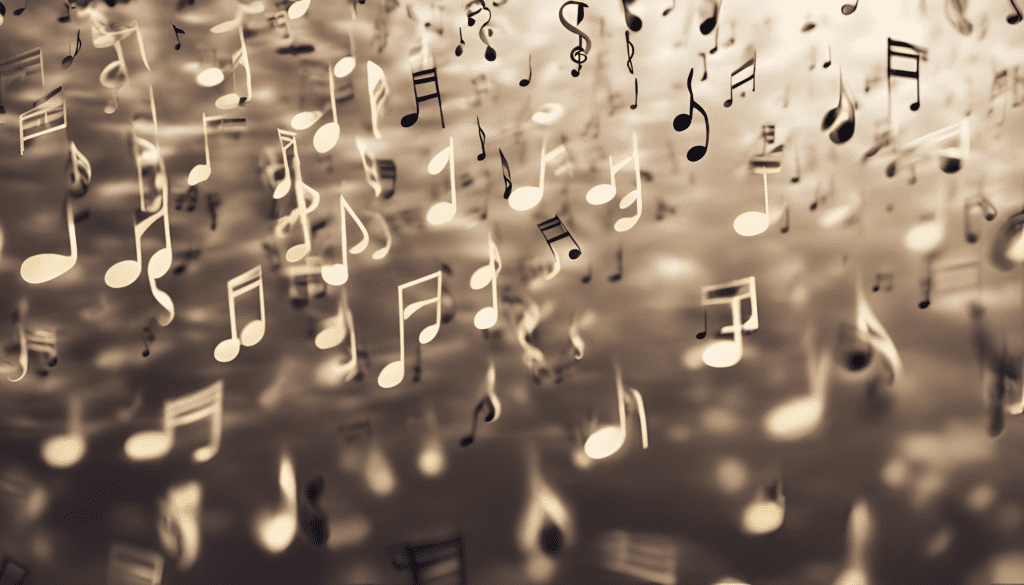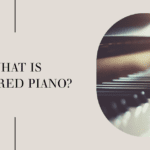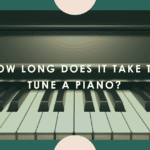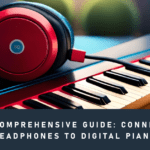As an experienced pianist and music teacher, I completely understand the dilemma of choosing the right digital piano. With so many options on the market, it can be overwhelming trying to determine which model best fits your needs and budget.
After years of testing countless digital pianos, I’ve learned there are several key factors to consider that will help guide you to the perfect instrument for you. In this comprehensive guide, I’ll walk through the top 10 factors to evaluate when shopping for a digital piano:
- Sound Quality
- Keyboard Action
- Polyphony Count
- Range of Sounds
- Extra Features
- Build Quality
- Headphone Jacks
- Tone Customization
- MIDI Compatibility
- Warranty
By evaluating these critical factors, you’re sure to find the digital piano that best matches your playing needs, skills, and budget. I recommend trying out pianos in person at musical instrument stores. Narrow down your top 3-4 contenders before making a selection.
Investing in a high-quality digital piano that feels and sounds fantastic will inspire you to play for years to come! Let me know if you have any other questions—I’m always happy to help guide musicians to their perfect instrument.
1. Sound Quality

The most important factor is without a doubt, sound quality. A digital piano’s skill in mimicking the tone of an acoustic piano will greatly impact your playing experience.
Listen closely to the piano’s audio sample library to assess how realistic the tones sound across the frequency range from bass to treble notes. Play various styles, from staccato to legato, evaluating resonance, sustain, and nuance of the notes.
High-end piano chip technology with ample onboard memory space will provide superior realism. Brands like Yamaha, Roland, and Kawai excel at faithfully reproducing the intricate tone of a fine acoustic grand.
Here are some signs of exceptional sound quality to listen for:
- Rich, warm bass notes that don’t sound muddy
- Clear and singing treble notes without shrillness
- Smooth tonal transitions between low, mid, and high register
- Resonant tones that ring out like an acoustic piano
- Lifelike sustain and decay as you hold down the pedal
- Dynamic responsiveness to playing velocity
- Nuanced differences when playing soft or hard
I always recommend listening through high-quality headphones for the best assessment. Poor speakers can mask flaws while good headphones reveal the subtle nuances.
2. Keyboard Action
The feel of the keys under your fingers contributes greatly to playability. Try out the keyboard action to determine if the keys have a weighted, hammer-style mechanism that replicates the touch of an acoustic piano.
The keys should have graded weighting, meaning the lower register feels heavier than the higher notes, just like on a real piano:
| Register | Weight Feel |
|---|---|
| Lower | Heavier |
| Middle | Medium |
| Higher | Lighter |
High-end actions from brands like Roland and Kawai provide an extremely realistic feel. I also recommend testing how the keys respond when playing rapid passages and trills. There should be good resistance to avoid a “mushy” uncontrollable feel.
Signs of a high-quality piano action:
- Weighted keys with convincing hammer action
- Graded weighting from low to high register
- Pleasant resistance when playing quickly
- Responsiveness when playing soft or hard
- Keys return precisely to resting position
- No clicking, bouncing, or rattling sounds
3. Polyphony Count

Polyphony refers to how many notes the digital piano can produce at one time. If the polyphony is too low, notes will cut off prematurely when you play busy passages with lots of sustained notes.
I recommend looking for at least 192-note polyphony, but 256-note is even better for complex classical and layered music.
Higher polyphony provides room for pedal resonance and ensures seamless playability.
4. Range of Sounds
While acoustic piano tones are the main attraction, having a variety of other high-quality sounds can add versatility.
Look for brass, strings, organs, synths, choirs, electric pianos, and more. It’s also nice when you can layer sounds together like piano and strings.
High-end digital pianos from Kawai, Roland, and Yamaha offer huge sound libraries with hundreds of options.
Look for onboard audio effects too like reverb, delay, tremolo, and modulation effects to further enhance the sounds.
Some great sound types to look for:
- Acoustic pianos (concert grand, pop grand, etc)
- Electric pianos (Rhodes, Wurlitzer, etc)
- Organs (pipe, jazz, etc)
- Strings (solo violin/cello, orchestral sections)
- Choirs and synth pads
- Brass and woodwinds
- Drums and percussion
5. Extra Features
Consider which other features will benefit your playing style.
For performing, look for modes that split and layer sounds. Duo mode splits the keyboard to allow side-by-side practice.
Bluetooth MIDI, audio recording, metronomes, and playback features expand the piano’s functionality.
Some models even offer song learning, accompaniment rhythms, light-up keys, and other educational features great for beginners.
Just be careful not to pay for unnecessary “bells and whistles” if you won’t use them. Prioritize the piano fundamentals first.
Here are some handy extra features to look for:
- Split and layer modes
- Duo mode for side-by-side play
- Bluetooth MIDI and audio
- Recording and playback functions
- Metronome and rhythm accompaniments
- Light-up keys for learning
- Companion apps
6. Build Quality

You’ll want an instrument built to last. Examine the materials used like solid wood versus plastic.
Heft the digital piano to feel its weight—a heavy sturdy construction prevents shaking and rattling.
Pay attention to details like the hinges, seam alignments, button quality, and stand stability. Testing the buttons and knobs will reveal any looseness or cheap construction.
High-priced models from Kawai, Yamaha, and Roland tend to use superior build components that withstand years of regular playing.
Inspect these parts of the build quality:
- Cabinet materials and finishes
- Weight and density feel
- Stand and pedal sturdiness
- Button, key, and knob resilience
- Alignment of seams and fittings
- Display screen visibility and tactile response
7. Headphone Jacks
Headphone jacks allow silent practice which is essential for apartment dwellers or playing at night.
Look for standard 1⁄4″ headphone jacks on the front or back. Even better if there are two jacks for you and a student/friend to listen privately.
Make sure any companion apps and sound expansion options are fully accessible via headphones without needing to also connect external speakers. Testing this out in the store with your own headphones is recommended.
8. Tone Customization
I appreciate digital pianos that allow custom shaping of the piano tone to suit my taste.
Look for standalone editing features like adjusting string resonance, hammer noise, damper resonance, and other nuances that bring the sound to life.
It’s also great when you can tweak effects like the reverb type and intensity, EQ, modulation, and more. The more tweakable parameters, the better.
This allows crafting a unique piano sound tailored to your personal playing style.
9. MIDI Compatibility
For recording and working with music production software, ensure the digital piano has MIDI ports.
- MIDI OUT will allow controlling external sound modules
- MIDI IN lets you play the piano sounds from an external controller
If the piano has a USB port, even better—this allows direct computer connectivity without traditional MIDI cables.
Check if the MIDI implementation transmits all the most important performance controls like velocity, aftertouch, pitch bend, mod wheel, and more.
10. Warranty
With long-term reliability in mind, examine the manufacturer’s warranty.
Premium digital piano warranties range from 3-10 years to cover defects.
Make sure you register the warranty properly upon purchase and keep your receipt. Understand what components are covered and which are not.
For example, some warranties exclude damage from improper use. Carefully read all warranty details to avoid confusion later.
I always recommend extending the warranty if possible, for that extra peace of mind on your investment.
Key Warranty Questions:
- How many years of coverage is included?
- What components are covered?
- Is improper use covered or excluded?
- Can I extend the warranty period?
- What is the process for making a warranty claim?
Summary
Evaluating these 10 critical factors will guide you to find the digital piano perfectly suited for your needs and budget:
- Sound Quality – Exceptionally realistic tones
- Keyboard Action – Weighted hammer action with graded weighting
- Polyphony – At least 192 notes, 256 optimal
- Sound Range – Wide selection of quality instruments
- Features – Useful options for your experience level
- Build Quality – Durable construction from quality materials
- Headphone Jacks – 1-2 jacks for private practice
- Tone Customization – Editing tools to tailor the sound
- MIDI Compatibility – For connectivity and recording
- Warranty – 3-10 years of defect coverage
I suggest trying out your top contenders in person at music stores. Listen closely and test the keyboard action. Narrow it down to the digital piano you find most inspiring to play for years to come!
Let me know if you have any other questions – I’m always happy to help guide musicians find their perfect digital piano match. Enjoy the journey to piano paradise!





